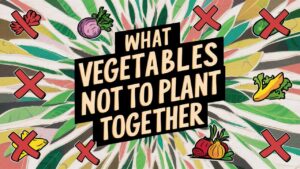In this blog post, we’ll explore some of the top choices for fall gardening in Arkansas, including the ideal planting windows and growing tips for each vegetable.
Arkansas Fall Favorites
Southern Peas

Southern peas, also known as cowpeas, are a fantastic addition to any Arkansas fall garden. These legumes are not only tasty and nutritious but also thrive in the warm, sandy soils that are typical of the region. Due to their drought resilience, southern peas can be planted as late as early September, allowing for a late-season harvest before the first frost.
Incorporating southern peas into your garden provides a nitrogen boost to the soil, as they fix nitrogen while growing. This makes them not just a food source but also beneficial to the overall health of your garden’s ecosystem. When cooking these versatile peas, consider making a traditional southern dish such as hoppin’ john or tossing them in salads for extra protein. To achieve a bountiful harvest, keep the soil moist but well-drained, and be on the lookout for common pests like aphids.
Green Beans
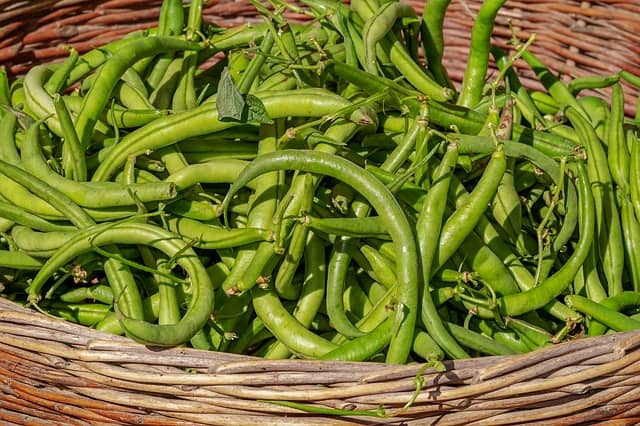
Green beans are a quintessential fall crop for Arkansas gardeners. Ideally planted between late August and early September, these beans thrive in the warm weather leading up to autumn and can produce a generous yield in as little as 50 to 60 days. The varieties that best suit Arkansas include bush beans and pole beans, each with its unique benefits.
Bush beans grow compactly, making them ideal for small gardens, while pole beans require support but can yield more produce in a smaller footprint. To maximize your green bean harvest, focus on ensuring consistent moisture and fertilizing with a balanced fertilizer. Harvesting regularly encourages new growth, so pick those beans when they’re young and tender for the best flavor. They’re delightful steamed, stir-fried, or even pickled, adding a burst of color and crunch to any fall dish.
Spinach
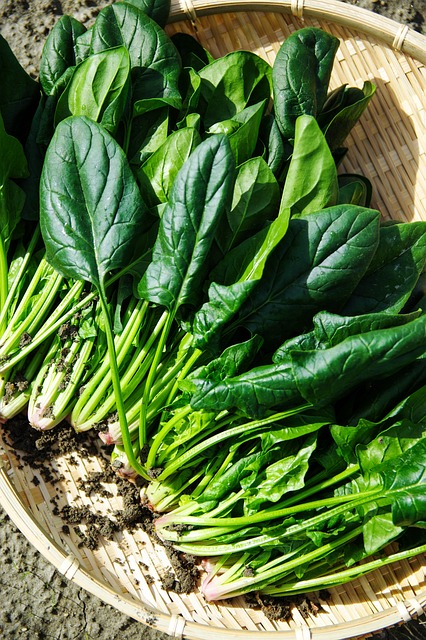
Spinach is one of the most rewarding fall crops that Arkansas gardeners can sow. With a planting window from September 1 to 15, spinach grows rapidly in the cooler temperatures of autumn, and it’s known for its versatility in the kitchen. This nutritious leafy green is packed with vitamins and can be harvested as baby leaves for salads or allowed to mature for cooking purposes.
To ensure a robust spinach crop, plant seeds in rich, well-amended soil that has good drainage. Spinach thrives in partial shade, making it especially suitable for fall gardens as the sunlight becomes less intense. Be vigilant about keeping the soil consistently moist, as spinach can bolt in hot spells. A favorite preparation method is lightly sautéing spinach with garlic and olive oil, which enhances its natural flavors while providing a healthy side dish for any meal.
Kale

Kale is a powerhouse among fall vegetables, prized for its health benefits and ability to withstand frost. When planting kale between September 1 and 15, gardeners in Arkansas can expect to harvest tender, flavorful leaves well into the winter months. Kale’s natural sweetness increases as the temperatures drop, making it an ideal choice for both fall and winter harvests.
This leafy green is remarkably adaptable, thriving in a variety of soil types as long as it receives ample sunlight. Regular watering and occasional fertilization will help cultivate sturdy plants that resist pests and diseases. Kale is incredibly versatile: it can be enjoyed raw in salads, blended into smoothies, or baked into crispy chips. For a hearty autumn dish, try making kale soup or adding it to your favorite pasta recipes, enhancing nutrition without sacrificing flavor.
Broccoli

Broccoli is a nutrient-dense vegetable that thrives in the cooler weather of fall, making it a ideal addition to any Arkansas garden. To cultivate broccoli successfully, gardeners should aim to plant seeds or transplants between August 20 and September 5, giving them enough time to mature before the first frost. Broccoli prefers rich, well-draining soil and benefits from ample sunlight, so select a location that receives at least six hours of direct light each day.
For optimal growth, a balanced fertilizer can help boost nutrient levels, and consistent watering is key to developing firm, tight heads. As broccoli matures, it’s crucial to monitor for pests such as cabbage worms and aphids, which can damage the leaves and diminish your yield. Once ready for harvest, broccoli can be enjoyed steamed, roasted, or incorporated into casseroles, elevating any autumn meal with its vibrant flavor and health benefits.
Cauliflower
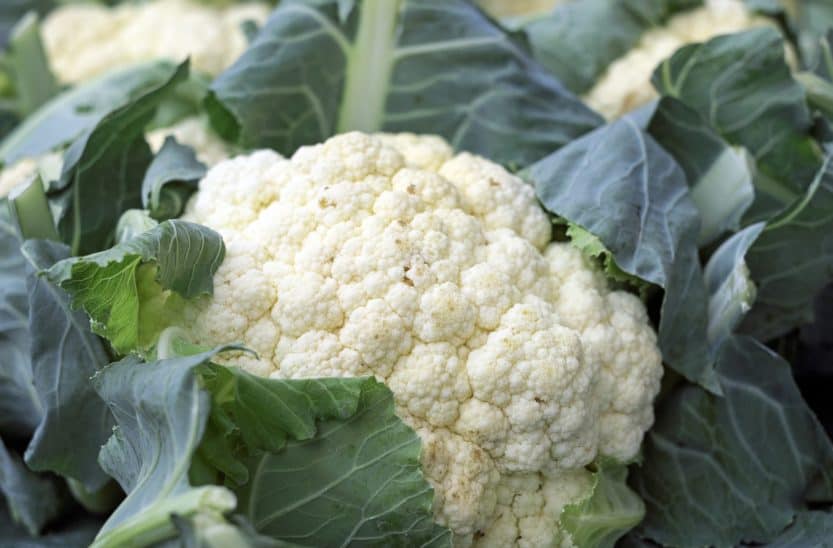
Closely related to broccoli, cauliflower also thrives as a fall crop in Arkansas. The planting window mirrors that of broccoli, running from August 20 to September 5, and requires similar soil conditions and care. Cauliflower prefers a slightly cooler environment during its growth, making the mild temperatures of fall perfect for this cruciferous vegetable.
One of the challenges with growing cauliflower is that it requires consistent moisture and nutrient-rich soil to prevent issues such as “buttoning,” where the plant forms small, undeveloped heads instead of the large, full curds expected. After planting, ensure that your cauliflower receives adequate water and consider mulching to retain moisture in the soil. Once harvested, this versatile vegetable can be steamed, pureed into soups, or even used as a low-carb substitute for rice in a variety of dishes.
Cabbage
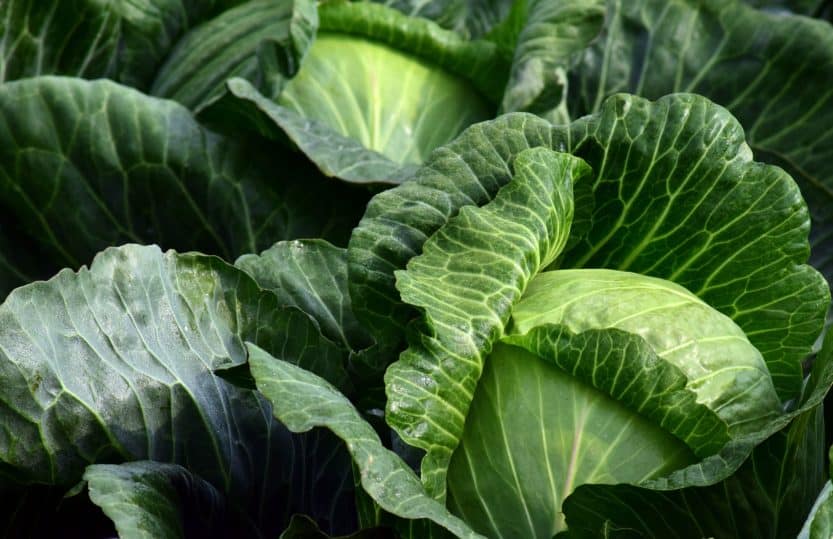
Cabbage is another cool-season crop that can flourish in Arkansas gardens. Ideal planting times range from August 25 to September 10, allowing ample growing time for this sturdy vegetable. Cabbage enjoys similar soil conditions to its relatives and is well-suited to the cooler fall months.
One of the advantages of growing cabbage is its versatility; it can be harvested at various stages, from young spring cabbage to mature heads. Cabbage requires consistent watering and benefits from a balanced fertilizer, particularly one high in nitrogen. Attention should also be paid to pests such as slugs and aphids, which can pose a threat to healthy crops. Cabbage can be shredded for coleslaw, used in soups, or fermented into sauerkraut, making it a staple in many fall and winter recipes.
Root Vegetables
Radishes
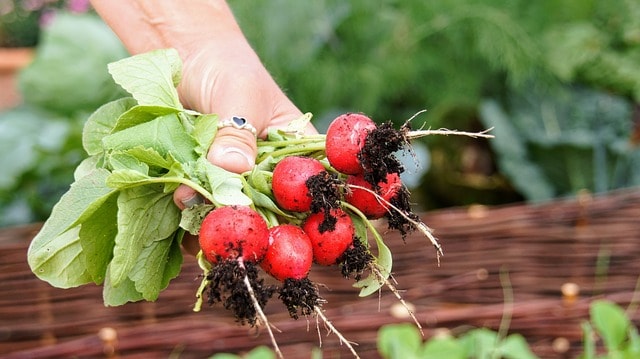
Radishes are a quick-growing crop that adds a splash of color and crunch to any dish. Planting should take place between September 1 and 15, as they flourish in the cooler temperatures of fall. One of the appealing aspects of radishes is their rapid maturity, often ready to harvest in as little as four weeks, making them an excellent choice for gardeners looking for fast results.
These root vegetables prefer loose, well-draining soil, allowing their bulbs to expand properly. Regular watering is essential, particularly during their early growth stages, to avoid harsh, woody flavors. Radishes can be consumed raw in salads, providing a peppery kick, or braised and roasted as a unique side dish. Moreover, their greens are also edible and can be sautéed or added to salads for added nutrition.
Carrots
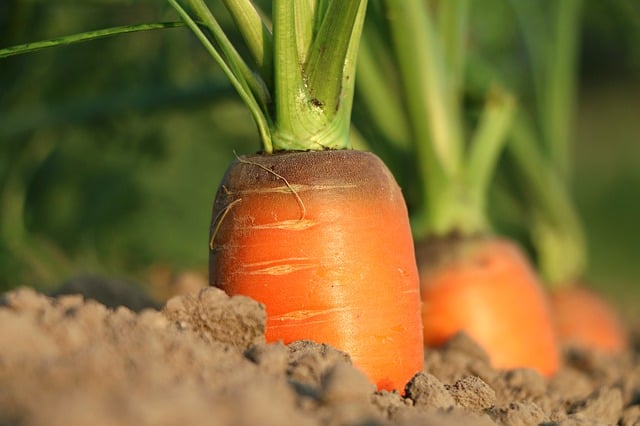
Carrots, beloved for their sweet flavor and crunchy texture, are well-suited for fall planting in Arkansas. Best planted from September 1 to 15, carrots thrive in cool weather and can develop a rich, sweet taste when grown in colder temperatures. These root vegetables require deep, loose soil free from rocks to allow for unobstructed growth, so consider amending the soil before planting.
Ensuring consistent moisture is vital to a successful carrot harvest, as changes in water supply can lead to splits and irregular shapes. Carrots can remain in the ground until you’re ready to harvest them, as they become sweeter with exposure to cooler autumn nights. Whether eaten raw, roasted, or blended into hearty soups, carrots are a garden favorite and a nutritional powerhouse.
As we further explore the benefits of cool-season crops in our fall garden, it’s clear that selecting the right vegetables to grow in Arkansas not only enhances the palate but also promotes a healthier lifestyle. From broccoli and cauliflower to cabbage, radishes, and carrots, these crops can thrive in the milder temperatures of fall, allowing Arkansas gardeners to enjoy a bountiful harvest as summer fades into autumn.
Turnips
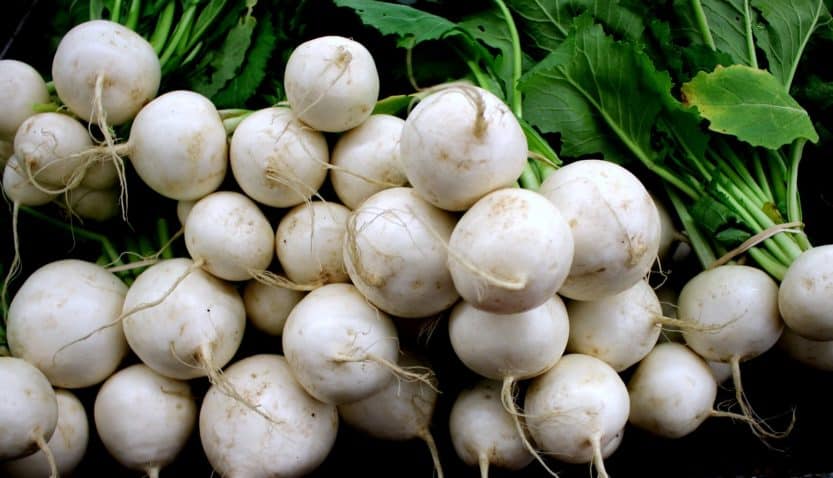
Turnips are a classic root vegetable that has been a staple in many cuisines worldwide. Ideal for Arkansas gardens, these vegetables should be planted between September 1 and 15 for optimal growth. Turnips thrive in well-drained, fertile soil and prefer cooler temperatures, which can encourage sweeter roots.
They can be enjoyed as young greens, known as turnip greens, or harvested fully mature. As the weather cools, the turnip bulbs develop a distinctive flavor profile that can be both sweet and peppery. In the kitchen, turnips can be roasted, mashed, or added to stews, making them a versatile addition to many fall dishes.
Moreover, turnips are relatively low-maintenance, requiring consistent moisture for their rapid growth. One key consideration is spacing; they should be planted with enough room to prevent overcrowding, which can lead to smaller roots. As spring approaches, any remaining turnips can still be harvested and enjoyed, ensuring a prolonged growing season.
Rutabaga

Rutabaga, a cross between a cabbage and a turnip, is another excellent choice for fall gardening in Arkansas. Like turnips, they thrive when seeded between September 1 and 15, and their sweet, earthy flavor intensifies as the bulbs mature in cooler temperatures. Rutabagas require similar growing conditions to turnips: well-drained soil and consistent moisture are essential for achieving optimal root development.
Harvest time generally occurs about 90 days after planting, when the bulbs reach about the size of a tennis ball. They are prized for their versatility in the kitchen—they can be baked, mashed, or roasted to delicious perfection. Rutabagas can also be used to create a colorful root vegetable mash when combined with potatoes or carrots.
One exciting aspect of rutabagas is their storage capacity. Once harvested, they can be stored in a cool, dark place for several months, making them a fantastic staple for winter cooking. Your consideration in planning your planting date and storage conditions can reward you with a long-lasting harvest throughout the colder months.
Parsnips
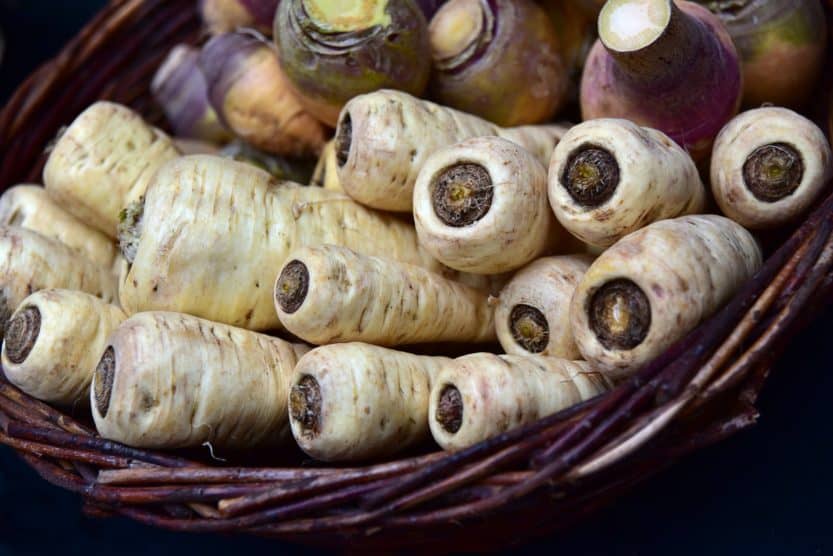
Parsnips are a lesser-known but immensely rewarding root vegetable that thrives in the fall planting window of September 1 to 15. These white, tapered roots require a long growing season, typically around 120 days, and are best harvested after the first frost, which sweetens their flavor.
Soil preparation is crucial for parsnips; they prefer deep, well-worked soil to accommodate their long taproots. Parsnips can be sown directly into the garden bed but can take a bit longer to germinate compared to other root vegetables. Patience is key!
In terms of culinary applications, parsnips shine in soups and stews, providing an earthy note that complements other seasonal vegetables. They can also be roasted alongside carrots for a sweet and savory side dish. One popular preparation method is to make parsnip puree, which is a creamy and delightful alternative to mashed potatoes.
Beets

Beets are a vibrant, nutrient-rich root vegetable that is perfect for the fall garden. Planting beets between September 1 and 15 in Arkansas allows them to develop a full, robust flavor as they mature in the cool weather. These colorful roots prefer loose, fertile soil and regular watering to achieve the best texture and taste.
What makes beets particularly attractive is their dual use; both the roots and the greens are edible. Beet greens can be harvested early and used in salads or sautéed, while the roots can be harvested later for roasting, pickling, or juicing. The earthiness of roasted beets pairs beautifully with goat cheese and walnuts, making an impressive fall salad that highlights seasonal flavors.
Beets also store exceptionally well, either in the ground or once harvested. They can be kept in cool, dark conditions for several months, extending your culinary options throughout the winter. Their adaptability and robust flavor make beets an invaluable addition to any fall garden in Arkansas.
Leafy Greens
Lettuce
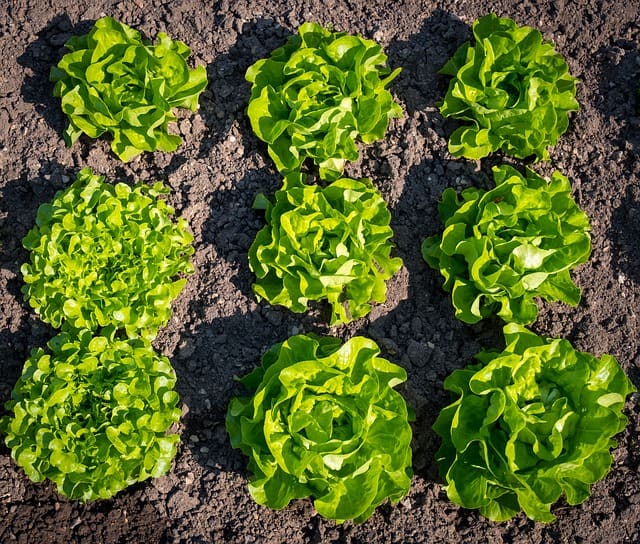
Lettuce is a staple in gardens across the country, and its adaptability makes it a perfect fit for Arkansas’ fall climate. The optimal planting window for lettuce is between September 1 and 15. With a wide array of varieties available—from crisp romaine to tender butterhead—gardeners can choose types that best suit their taste and culinary uses.
Lettuce prefers well-drained soil rich in organic matter. To achieve optimal results, it’s essential to keep the soil evenly moist. Unlike some vegetables, lettuce can be seeded closely together, allowing for plenty of early harvesting opportunities when thinned. The responsiveness of lettuce to cooler temperatures results in crisp and flavorful leaves, making these greens perfect for salads, sandwiches, or as a garnish for soups.
For extended harvests, consider staggering your planting. Sowing seeds every week or two can yield fresh greens well into the fall. Additionally, lettuce can be grown in containers, making it accessible even for gardeners with limited space. Protecting young plants from frost with row covers can help prolong the growing season even further.
Collard Greens
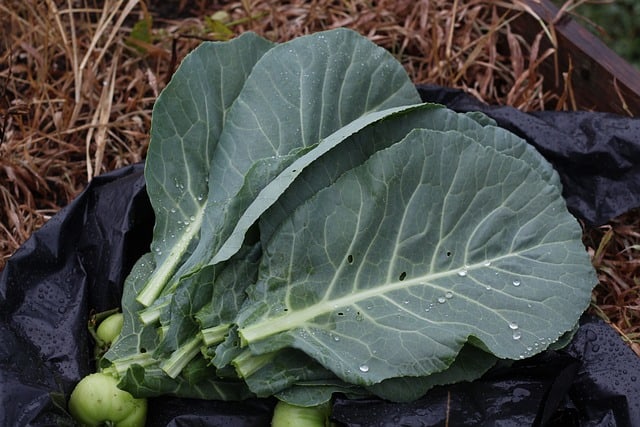
Collard greens are a hardy green that thrives in the cooler months and are well-suited to the Arkansas climate. Similar to kale, collards develop a robust flavor after a light frost, making them a favorite among southern cooks. The ideal planting time for collard greens is also from September 1 to 15, allowing them to mature in the milder autumn temperatures.
These greens flourish in well-drained, nutrient-rich soil. They require consistent moisture, particularly during germination and early growth stages. Collard greens can store well, allowing for a generous harvest that can be used in various dishes, from classic southern recipes like collard greens stew to modern salads that highlight their robust texture.
Another benefit of growing collard greens is their resilience to pests. They can withstand a bit of neglect in terms of watering and nutrient application, making them an excellent choice for beginner gardeners. As they grow, be sure to harvest the outer leaves consistently; this encourages new growth and extends your harvest period.
Swiss Chard
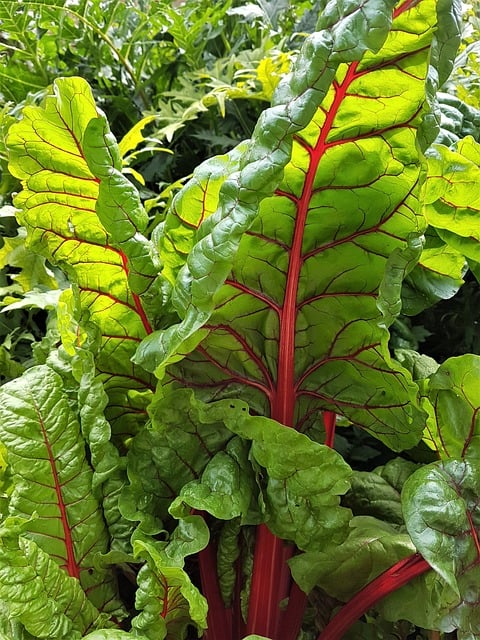
Swiss chard is another exceptional leafy green that excels during Arkansas’ fall gardening season. With its vibrant stems of red, yellow, and white and large, crinkled leaves, Swiss chard not only adds visual interest to your garden but also packs a punch of nutrients. The ideal planting window is from September 1 to 15, giving the greens ample time to mature before winter.
Swiss chard grows best in well-draining soil that is enriched with organic matter. Unlike some other leafy greens, Swiss chard has a remarkable ability to tolerate heat, allowing it to flourish even in warmer fall days. However, it prefers cooler temperatures for optimal flavor development. Regular watering and mulching can help retain soil moisture and regulate temperature.
This versatile green can be prepared in several ways—steamed, sautéed, or even used in smoothies for a nutrient boost. The flavor profile is mild, making Swiss chard suitable for a wide range of dishes, from Mediterranean-style frittatas to hearty grain bowls. Moreover, both the leaves and stems are edible, providing a bountiful return on planting.
Regional Planting Dates
Northwest Arkansas (Zone 7a): August 15 – September 15
In Northwest Arkansas, classified as USDA hardiness zone 7a, the optimal window for planting fall vegetables ranges from August 15 to September 15. During this period, temperatures begin to drop, and the risk of extreme heat diminishes, creating ideal conditions for cool-season crops. This zone allows for a variety of vegetables to flourish—consider planting crops like broccoli, cauliflower, collard greens, and various leafy greens.
Gardening in this region also allows for experimenting with root vegetables such as carrots and turnips, which thrive in the well-drained soil typical of Northwest Arkansas. To maximize your harvest during this timeframe, ensure that your soil is enriched with organic matter to provide the necessary nutrients for robust growth.
Central Arkansas (Zone 7b): August 20 – September 20
Central Arkansas, designated as zone 7b, has a slightly wider planting window from August 20 to September 20. This slight extension allows gardeners in this region the flexibility to plant a broad range of fall vegetables while considering the mild climate that continues later into the fall months.
Central Arkansas gardeners can effectively grow leafy greens, such as Swiss chard and lettuce, along with cool-weather favorites like cabbage and beets. The additional time allows for staggered plantings, ensuring fresh crops are available throughout fall. When preparing your garden beds, remember to incorporate compost or well-rotted manure to enrich the soil, enhancing productivity.
Southeast Arkansas (Zone 8a): September 1 – October 1
As we move into Southeast Arkansas, which falls under USDA zone 8a, the planting window shifts to September 1 to October 1. With a longer growing season, gardeners here have the advantage of starting crops later in the year while still enjoying favorable temperatures.
This region accommodates a wide variety of vegetables, including rutabagas, parsnips, and other hearty root crops. Since temperatures can be mild well into late fall, you can also experiment with late-seeded crops, allowing for a more diverse garden. Maintaining moisture in the soil during this planting window is critical, as Southeast Arkansas can experience fluctuations in rainfall during fall.
Additional Tips
While growing timings are vital, proper planting techniques and garden care will significantly enhance the success of your fall garden. Here are some additional tips to make the most of your vegetable crops:
Planting Depth and Spacing: For most fall vegetables, plant seeds 1-2 inches deep. The depth may vary depending on the size of the seeds, so always refer to individual seed packets for specific guidelines. Additionally, space your seeds 1-4 inches apart based on the vegetable type to ensure adequate room for growth and airflow, preventing overcrowding and diseases.
Watering Techniques: After planting, water the soil gently but thoroughly. Avoid washing away seeds by using a light spray or a watering can instead of a garden hose. Providing consistent moisture is crucial for seed germination and early growth. As seedlings develop, be mindful of watering needs, especially in the fluctuating temperatures of fall.
Sunlight and Soil Quality: Leafy greens and vegetables thrive when exposed to full sun, requiring 6-8 hours of direct sunlight daily. Select a planting site that maximizes exposure while ensuring that your soil is well-draining. Incorporating organic matter such as compost or peat moss will improve soil structure, encouraging root development and nutrient uptake.





